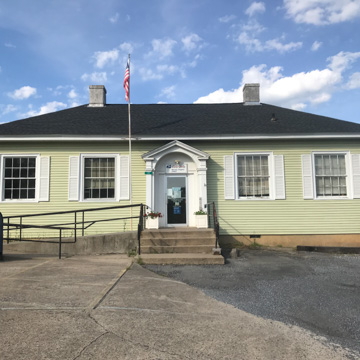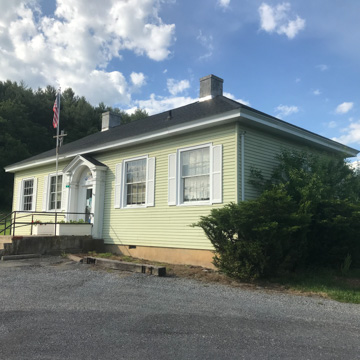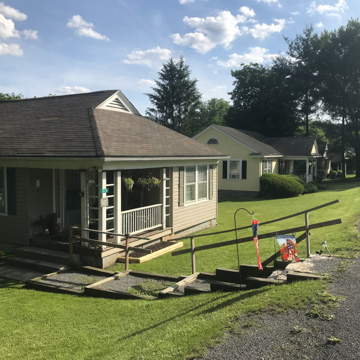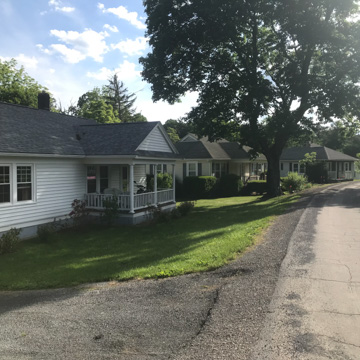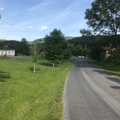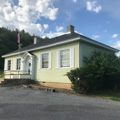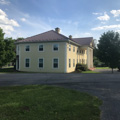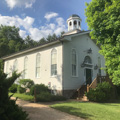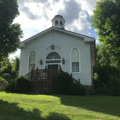Bacova is a well-preserved company town built by the Tidewater Hardwood Company for the employees of its nearby sawmill. The town's name is a contraction of Bath County, Virginia. While the vast tracts of timberland the company owned in western Bath County could provide the lumber, the remote area lacked a reliable pool of labor. To remedy this, the company built the town to attract workers and their families. Bacova was laid out with curved streets bordered by forty-two one-story houses, the former company office building, commissary, and a nondenominational chapel. The Great Depression slowed mill operations and the mill closed in 1936. In 1957 Malcolm Hirsh, an industrialist from New Jersey, purchased the entire village, revitalized and sold the houses to individual owners, and established a new industry, Bacova Guild. A variety of laminated fiberglass products were manufactured in the former commissary until the end of the twentieth century.
The one-story Colonial Revival former Bacova office building (c. 1922) now serves as a post office. Also Colonial Revival is the commissary (c. 1925), a two-story, hipped-roof, frame and weatherboarded structure with a central pedimented entrance portico on monumental square wooden columns. The forty-two frame houses (1921–1922), sited around a park in the middle of the village, vary slightly in mass and details, but all are Colonial Revival and have one-bay front porches. Situated near the entrance to the residential section, Bacova Chapel (1925) was built by the residents of Bacova, who donated either money or labor to construct it. The frame and weatherboard building features tall round-arched multipane windows and a front entrance highlighted by sidelights and a large fanlight. An octagonal domed cupola with round-arched openings rises from the roof.















